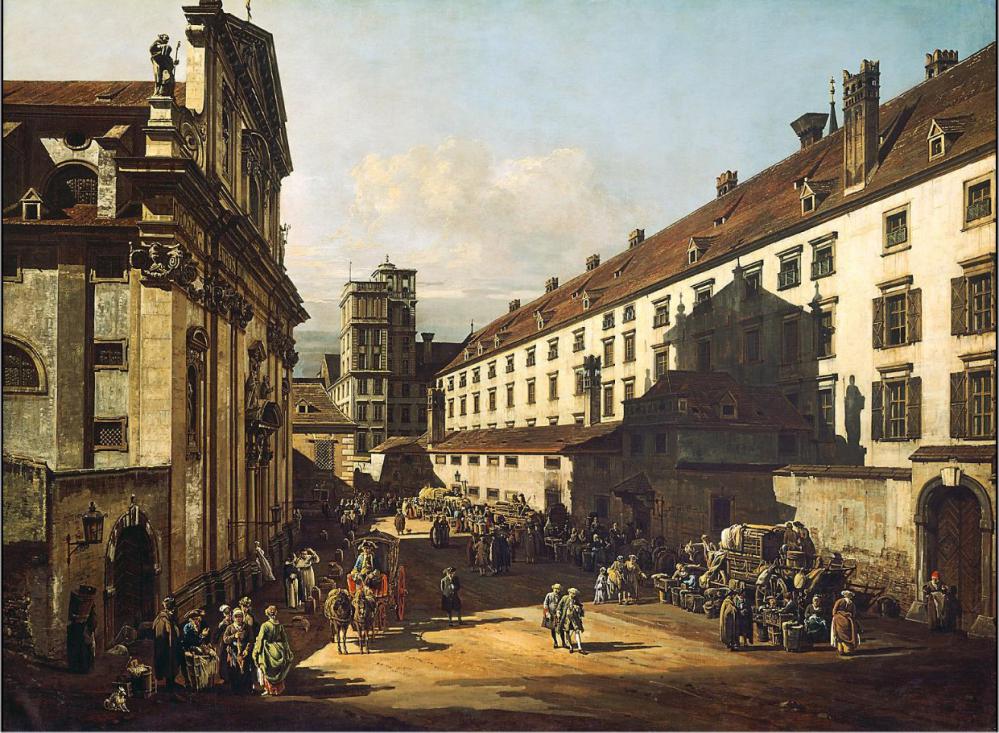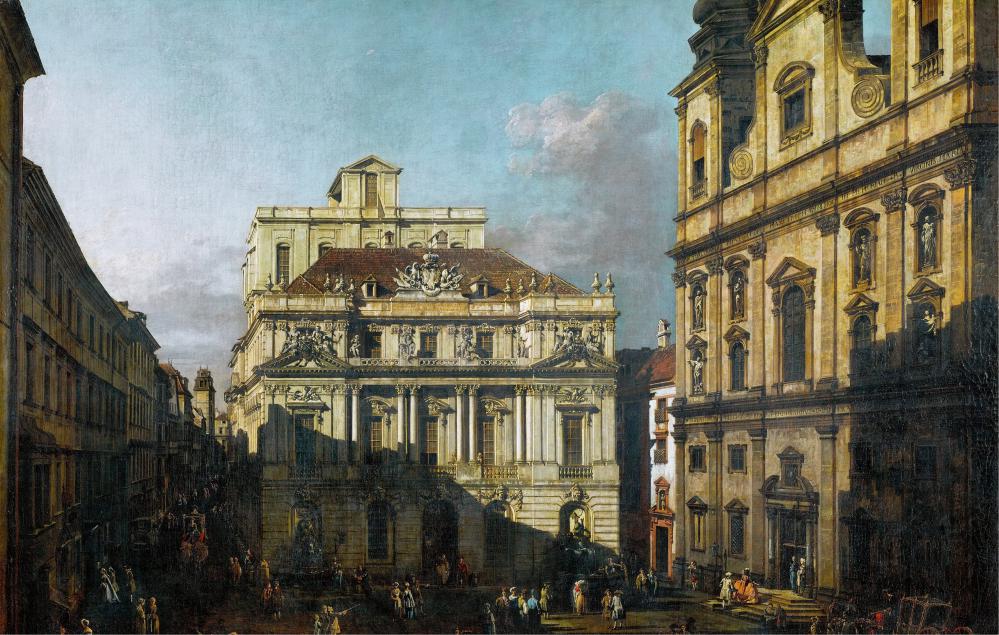
Category of Astronomical Heritage: tangible immovable
Jesuit Observatory Vienna, Austria

Description
Geographical position
Jesuit Observatory, Bäckerstraße / Postgasse, 1. Bezirk, Vienna, Austria
See also: Observatories in Vienna in the 18th and 19th Century:
- Marinoni Observatory, Mölkerbastei, Vienna (1720s)
- Old Vienna University Observatory (1754--1879), today Austrian Academy of Sciences
- Kuffner Observatory, Vienna-Ottakring (1886)
- Vienna University Observatory, Wien-Währing (1879)
Location
Latitude +48°12.9’ N, Longitude -16°23.7’E, Elevation 190m above mean sea level.
IAU observatory code
545
Description of (scientific/cultural/natural) heritage
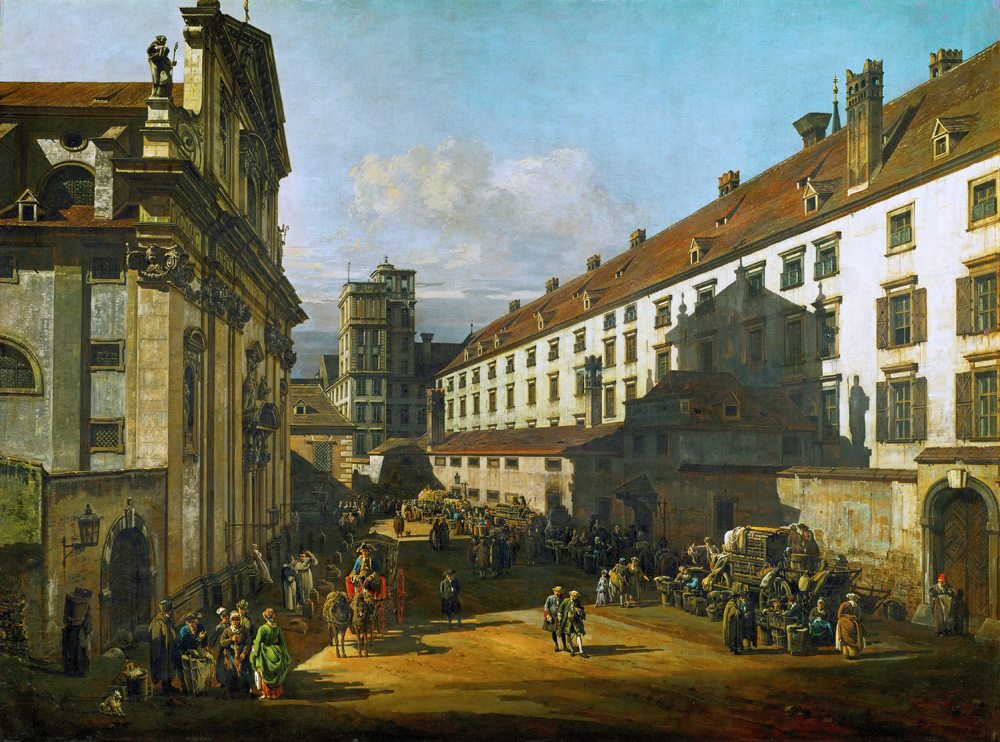
Fig. 1. Jesuit Observatory Vienna (1733), Mathematical Tower (Painting by Bernardo Bellotto (Canaletto) 1759 in the Kunsthistorisches Museum in Vienna)
In 1550, the Jesuit Order was called to Vienna by Ferdinand I (1503--1564), Holy Roman Emperor from 1556 to 1564.
In 1623, the Jesuit College was incorporated into Vienna University. In 1714, the Jesuits set up the "Museum Mathematicum", which was equipped with instruments for optics, astronomy, geography, geometry, and a collection of terrestrial and celestial globes. The director was Pater Joseph Franz (1704--1776).
In 1733, at the suggestion of the astronomer Johann Jakob von Marinoni (1676--1755), the Jesuits built an observatory in the form of a 45m high tower (Mathematical Tower, "Stern-Gugg-Thurm") on the Jesuit College building at Bäckerstraße / Postgasse. This was Vienna’s first permanent observatory, albeit still with very modest facilities, which was finished in 1734. The main scientific activities were position measurements of the stars (astrometry).
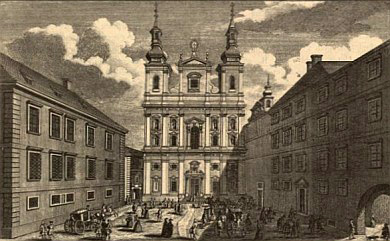
Fig. 2a. Jesuit observatory (centre) in the area of Bäckerstraße, corner of Postgasse, seen from Heumarkt (Johann Andreas Ziegler, 1780, Sammlung von Aussichten der Residenzstadt Wien von ihren Vorstädten und einigen umliegenden Oertern. Wien: Artaria 1779/98, Tafel 1 / Wienbibliothek im Rathaus, D-86770, Wien-Wiki, CC4)
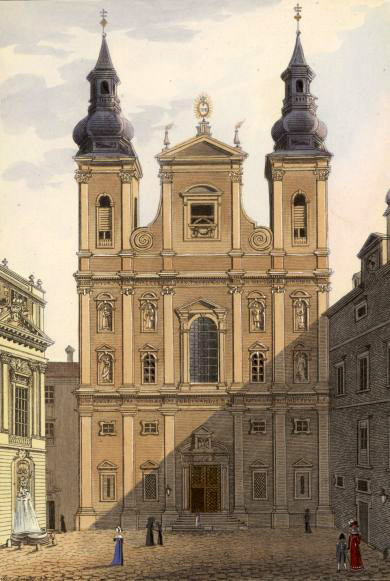
Fig. 2b. Jesuit Church Vienna and the Jesuit Academic College (Tranquillo Mollo 1823)
From 1734 to 1750, Father Joseph Franz (1704--1776), Professor of mathematics, experimental physics and astronomy, carried out extensive astronomical observations (lunar eclipses, calculations of the orbits of Moon and Mercury), and was assisted from 1745 by Maximilian Hell (1720--1792), a novice of his order. Joseph Franz also devoted himself to the study of the nature of electricity (De natura electricitas, 1751).
Jozef Ksaver [Joseph Xaver] Liesganig (1719--1799), another member of the Jesuit Order, also devoted himself to astronomical observations in addition to his work as a mathematics professor at the university (1752). He was entrusted with the direction of the Jesuit Observatory in 1756, and held it until the liquidation of the order in 1773. Then, the former Jesuit Observatory in Vienna merged into the University Observatory Vienna.
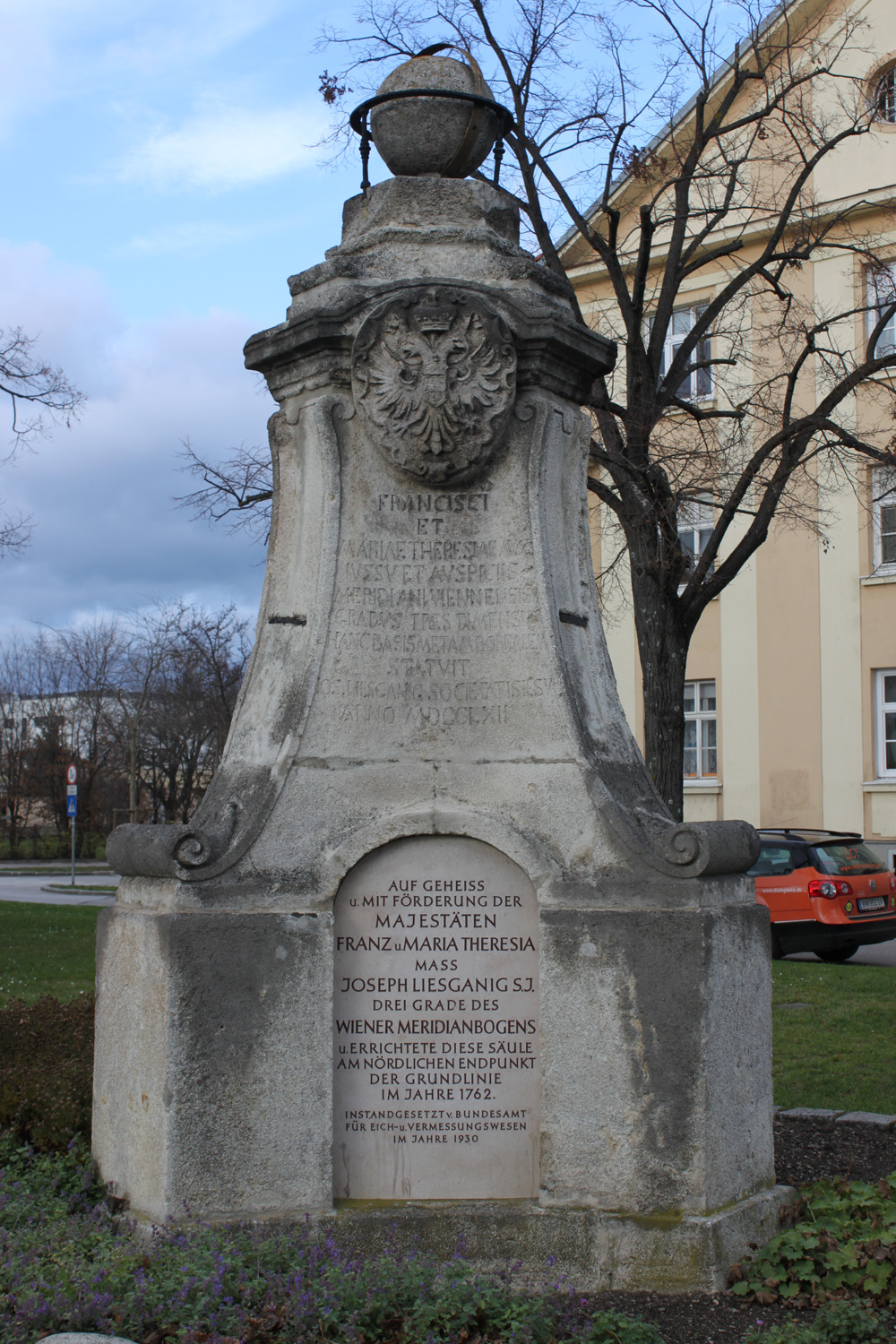
Fig. 3. Liesganig Monument in the Neustadt end point of the baseline (Liesganigstein), (Wikipedia, CC0, Anton-kurt)
Liesganig was active not only as astronomer, but also as surveyor and cartographer. In 1757, he determined the latitude of Vienna with his 10-foot-zenith sector. In 1761 to 1765, Liesganig was commissioned by Empress Maria Theresa to measure the Viennese meridian; the result was the measurement of a 320km long meridian arc from Brno via Vienna to Varasdin. In the years 1766 to 1769, he determined the Hungarian reference meridian.
As a basis for the triangulation, Liesganig chose the distance between Wiener Neustadt and Neunkirchen, which is now known as the Wien -- Neustädter Grundlinie (base line).
Due to Liesganig’s special geodetic achievements, the Vienna observatory became Austria-Hungary’s longitude reference point, which was later transferred to the new University Observatory.
In 1761 and 1767, he observed the rare phenomenon of the Transit of Venus from Vienna.
Liesganig with the participation of the famous astronomer Franz Xaver von Zach (1754--1832) of Hungary, since 1787 in Gotha, Germany, made a trigonometric survey in Lwiw (Lemberg) Observatory, Galicia, today Ukraine, and reduced the data to the meridian of this observatory.
In 1773, the Jesuit Order was suppressed by decree of Pope Clement XIV, which ended the Viennese Jesuit College and the Jesuit Observatory.
History
The Jesuit tower was once crowned with an armillary sphere. A detailed description of the individual construction phases can be found in the Jesuit "house chronicle" kept annually, the "Litterae annuae provinciae Austriae Societatis Jesu".

Fig. 4a. Jesuit Church tower with armillary sphere, Vienna (1724), (Johann August Corvinus after Salomon Kleiner, Sammlung Belvedere)
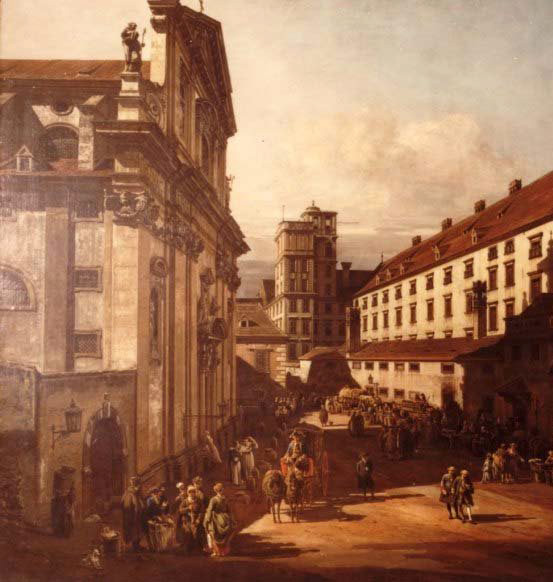
Fig. 4b. Jesuit Observatory Vienna (1733), Mathematical Tower in the centre, on the right the Jesuit Academic College (today Postgasse 7), on the left the Dominican Church (Painting by Bernardo Bellotto (Canaletto) 1759 in the Kunsthistorisches Museum in Vienna (Archiv der Universität Wien, Bildarchiv Signatur 106.I.266)
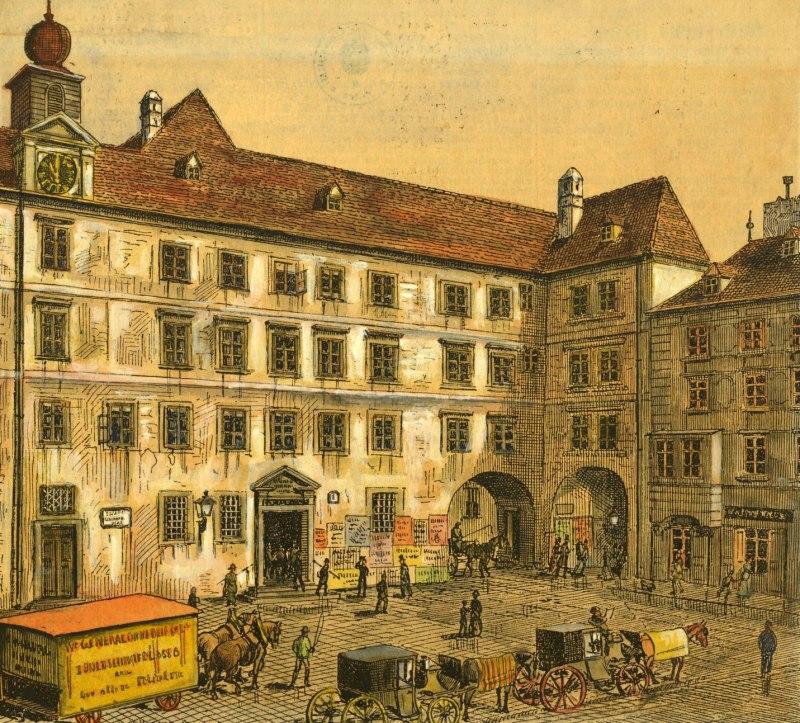
Fig. 4c. Collegium Academicum Viennense Societatis Jesu (today Postgasse 7), and "Alte Aula" [Old Auditorium] (Vienna University, 650plus)
Instruments
- 10 foot Zenith sector
- ...
State of preservation
The Jesuit Observatory Vienna is not preserved. Finally in 1773, by decree of Pope Clement XIV, the Viennese Jesuit College was closed; this also was the end of the Jesuit Observatory.
Comparison with related/similar sites
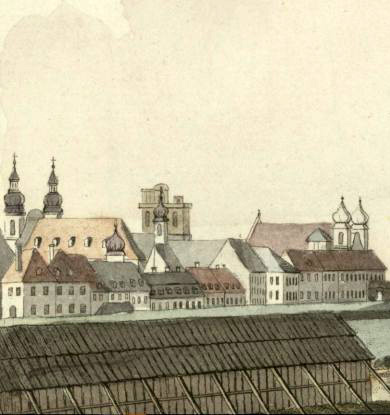
Fig. 5. Jesuit Observatory Vienna (1733), Mathematical Tower in the centre, seen from Heumarkt (Johann Andreas Ziegler, 1780)
The Jesuit Observatory Vienna was a tower observatory like Berlin observatory, the Marstall, was a tower observatory like several in the 18th century.
Berlin Academy Observatory (1700), Zwehrenturm in Kassel (1710), Clementinum Prague (1722), Specola - Bologna Observatory (1712), Old Vienna Academy Observatory -- tower on the top (1755), Osservatorio Astronomico di Brera of the Jesuits in Milano (1762), Padova (Padua) Observatory (1767), Mannheim Observatory
Threats or potential threats
--
Present use
--
Astronomical relevance today
no longer existing.
References
Bibliography (books and published articles)
- Firneis, Maria G.; Haupt, Hermann & Peter Holl: Sternwarten in Österreich. Österreichische Akademie der Wissenschaften 2005, Jesuitensternwarte.
- Günther, Siegmund: Liesganig, Joseph. In: Allgemeine Deutsche Biographie (ADB), Band 18. Leipzig: Duncker & Humblot 1883, p. 637.
- Fischer, Walther: Liesganig, Joseph. In: Neue Deutsche Biographie (NDB), Band 14. Berlin: Duncker & Humblot 1985, p. 540--542.
- Kellner, Heinrich: Franz, Josef. In: Allgemeine Deutsche Biographie (ADB), Band 7. Leipzig: Duncker & Humblot 1877, p. 318 f.
- Mühlberger, K.: Universität und Jesuitenkolleg in Wien: Von der Berufung des Ordens bis zum Bau des Akademischen Kollegs. In: Karner, H. & W. Telesko: Die Jesuiten in Wien. Wien 2003, p. 21--37.
- Pärr, Nora: Wiener Astronomen -- Ihre Tätigkeit an Privatobservatorien und Universitätssternwarten. Universität Wien, Diplomarbeit, Januar 2001.
- Udías, Agustin: Searching the Heavens and the Earth: The History of Jesuit Observatories. Dordrecht: Kluwer Academic 2013.
- Udías, Agustin: Jesuits and the Natural Sciences in Modern Times, 1814--2014. In: Jesuits and the Natural Sciences in Modern Times, 1814--2014. Leiden: Brill (Brill’s Research Perspectives in Jesuit Studies) 2019, p. 1--104 (doi.org/10.1163/9789004394902_002).
- Wrba, J., S.J.: Der Orden der Gesellschaft Jesu im Alten Universitätsviertel von Wien: Hundertfünfzig Jahre von den Jesuiten geprägte Universität. In: Hamann, G.; Mühlberger, K. & F. Skacel: Das alte Universitätsviertel in Wien, 1385--1985. Wien 1985, p. 47--74.
Links to external sites
- Die Jesuitensternwarte Wien
- Die Jesuitensternwarte Wien
- The Society of Jesus and the University of Vienna -- From the "universitas magistrorum et scholarium" to a Catholic state university, 1551--1773 --650 plus - History of the University of Vienna
- Sternwarten in Österreich. Österreichische Akademie der Wissenschaften 2005.
- Sternwarten (Wien-Wiki)
Links to external on-line pictures
no information available
No multimedia content published
Currently there is no multimedia content published for this case study







